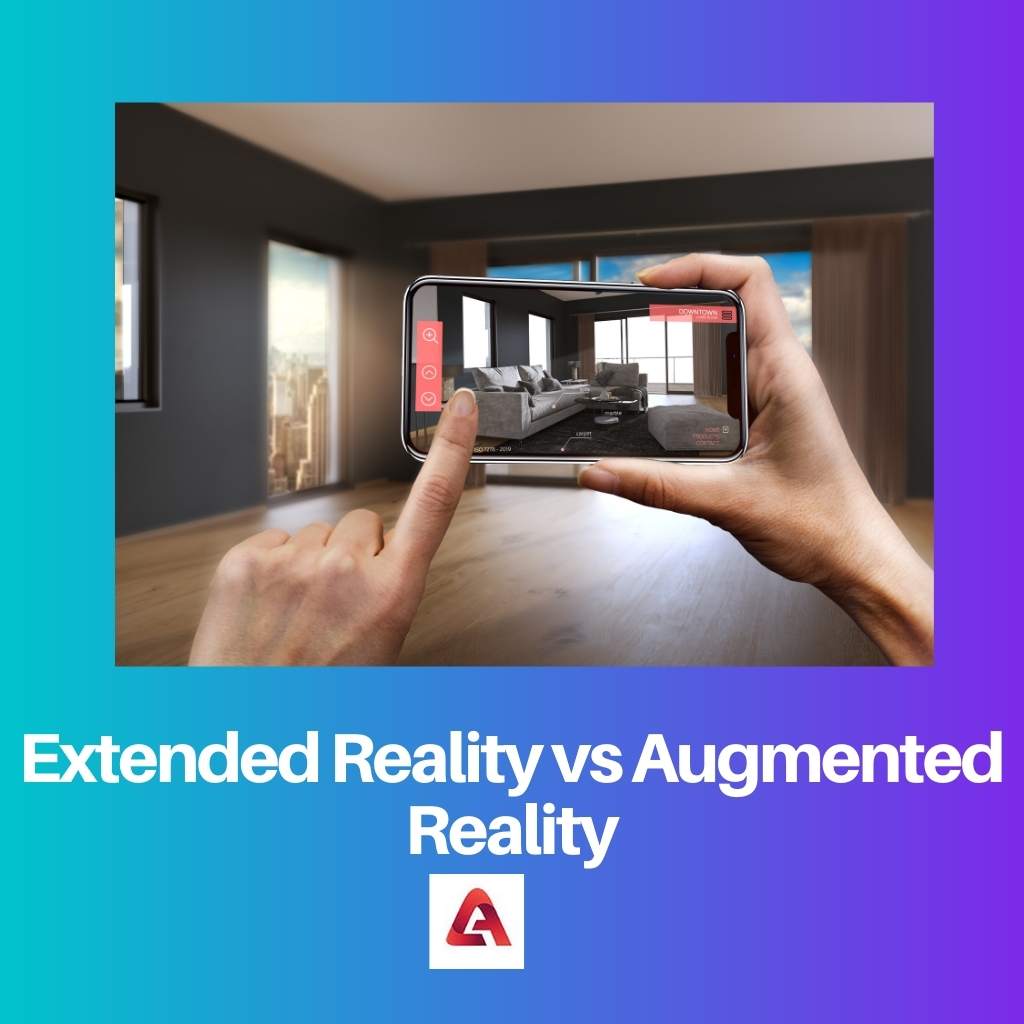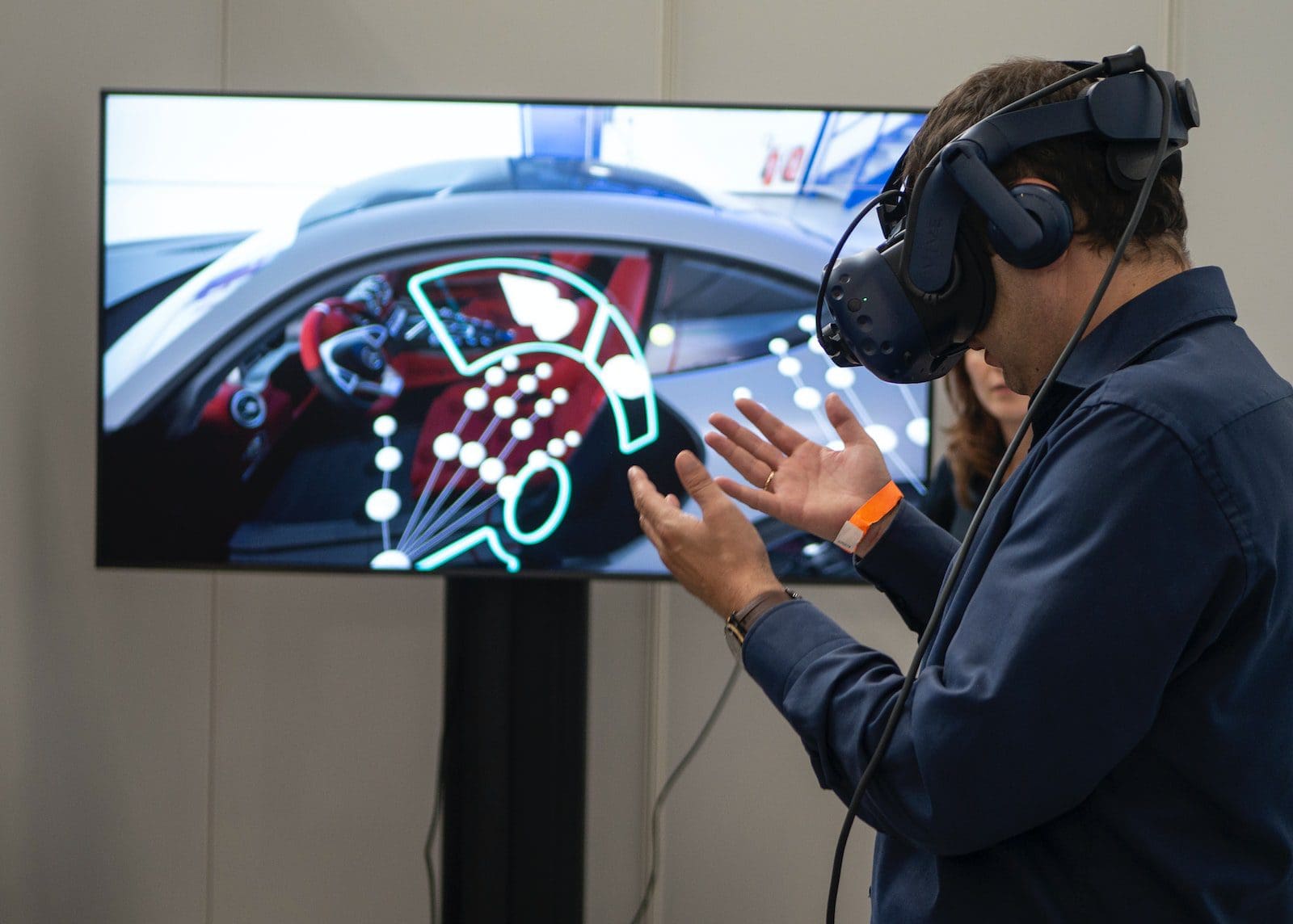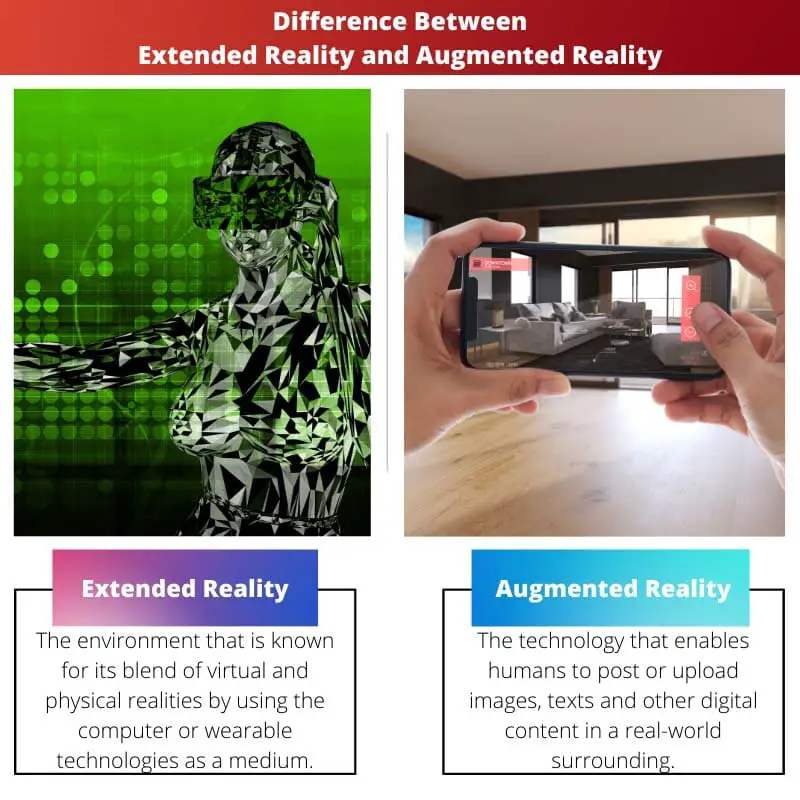We live in a world where technology is rapidly growing and is becoming advanced. This growing technology makes us humans more accessible to the resources that we require to complete our daily rigmarole.
These several technologies include 1. Extended Reality or XR, and 2. Augmented Reality or AR. These two concepts have their independent notions and implication.
Key Takeaways
- Extended reality is a term that encompasses a range of technologies, including augmented reality, virtual reality, and mixed reality. In contrast, augmented reality is a specific technology that overlays digital content in the real world.
- Extended reality is used for entertainment and gaming, as well as for training and education. In contrast, augmented reality is increasingly used in various industries, including healthcare, retail, and manufacturing.
- Extended reality has the potential to transform how we interact with the digital world, while augmented reality is already being used to enhance the way we experience the real world.
Extended Reality vs Augmented Reality
The difference between Extended reality and Augmented reality is their meaning. The environment that is known for its blend of virtual and physical realities by using the computer or other technologies as a medium is known as Extended reality, on the other hand, the technology that enables humans to post or upload images, texts and other digital content in a real-world surrounding is known as the Augmented reality.

The environment that is known for its blend of virtual and physical realities by using computer or wearable technologies as a medium is known as Extended reality.
The technology that enables humans to post or upload images, texts and other digital content in real-world surroundings is known as Augmented reality.
Comparison Table
| Parameters of Comparison | Extended Reality | Augmented Reality |
|---|---|---|
| Meaning | The environment that is known for its blend of virtual and physical realities by using the computer or wearable technologies as a medium is known as Extended reality. | The technology that enables humans to post or upload images, texts and other digital content in a real-world surrounding is known as the Augmented reality. |
| Acronyms | XR | AR |
| Subtypes | Augmented Reality, Virtual Reality, Mixed Reality, 3D audio, human and machine interaction technologies. | Marker-based Augmented Reality, Markerless Augmented Reality, Location-based Augmented Reality, Superimposition Augmented Reality, Projection-based Augmented Reality, Outlining Augmented Reality. |
| Advantages | Can be used in many fields like real estate, marketing and advertising, architecture and construction, museums, logistics, health etc. | The user’s knowledge and information are increased. |
| Disadvantages | Prone to cyberattacks, social engagement is decreased, the implementation is costly. | Expensive, probably less accessible to some audience. |
What is Extended Reality?
The environment that is known for its blend of virtual and physical realities by using computer or wearable technologies as a medium is known as Extended reality.
There are several types of Extended reality. These several types have different meanings, applications, advantages and disadvantages.
Several extended reality applications are used in many fields, including real estate, marketing and advertising, architecture and construction, museums, logistics, health, etc.
The extended reality is one of the evolving technologies, and in the upcoming years, it is going to change and grow even more. The several types of extended reality are applied in several fields.

What is Augmented Reality?
The technology that enables humans to post or upload images, texts and other digital content in real-world surroundings is known as Augmented reality.
The three basic elements of Augmented Reality include a blend of both real and virtual worlds, an interaction that is real, and virtual and real objects that are demonstrated in 3D.
Several types of Augmented Reality include Marker-based Augmented Reality, Markerless Augmented Reality, Location-based Augmented Reality, Superimposition Augmented Reality, Projection-based Augmented Reality, Outlining Augmented Reality etc.
Several advantages of Augmented Reality include an increase in the user’s knowledge. The user is provided with information.

Main Differences Between Extended Reality and Augmented Reality
- The applications of extended reality include camera tracking in games and, thus, in the gaming industry, training of employees and consumers etc., on the other hand, the applications of augmented reality include reviewing and scanning images in the education field.
- Extended reality refers to interactions between humans and machines by computer technologies. On the other hand, augmented reality refers to imposing digital content on the real world that is created by computer technology.

- https://link.springer.com/article/10.1007/s11042-010-0660-6
- https://dl.acm.org/doi/abs/10.1145/3089269.3089290

The distinctions between Extended Reality and Augmented Reality are well-explained, along with the advantages and disadvantages of each. The detailed comparison table provides a clear overview of the key differences.
Absolutely, the detailed comparison helps in understanding how these technologies are applied in various fields, and the potential impact they can have on our interaction with the digital and physical worlds.
This article effectively highlights the diverse applications of Extended Reality and Augmented Reality in different industries. The explanations are comprehensive and provide valuable insights into their functionalities.
This article effectively differentiates between Extended Reality and Augmented Reality, providing detailed comparisons and clear definitions. The insights into their applications and the advantages and disadvantages are valuable for understanding their functionalities.
The article offers a thorough analysis of the distinct features and applications of Extended Reality and Augmented Reality, serving as an insightful resource for individuals interested in technology trends.
The comparison table simplifies the understanding of the differences between Extended Reality and Augmented Reality, and the advantages and disadvantages are clearly presented. It’s a well-researched piece with valuable information.
The content is informative and well-structured, providing a clear understanding of Extended Reality and Augmented Reality. The explanations are detailed and supported by credible references.
This article offers a detailed, insightful comparison between Extended Reality and Augmented Reality, providing valuable information on the various types and applications. The disadvantages and advantages are well-explained, offering a balanced view of both technologies.
I agree, the article effectively highlights how these technologies can impact different industries and the implications for future developments. The information is presented in a well-organized manner.
The detailed comparison between Extended Reality and Augmented Reality, along with comprehensive explanations, provides a nuanced understanding of their applications and uses. The future growth prospects are well-articulated, making this article an invaluable resource for technology enthusiasts.
The well-evidenced explanations of Extended Reality and Augmented Reality, along with their implications, offer a comprehensive understanding of these technologies and their future developments. The collaborative applications are effectively highlighted.
I fully agree with the insightful analysis of Extended Reality and Augmented Reality, and their potential impact on various industries. This content serves as a well-structured guide to understanding these advanced technologies.
This article provides a detailed comparison between Extended Reality and Augmented Reality, explaining the meaning, applications, advantages, and disadvantages of both. The references cited also add credibility to the information presented.
I agree, the content is insightful and well-researched. It’s a great resource for anyone looking to understand the differences and applications of these advanced technologies.
The systematic comparison and detailed descriptions aid in understanding the diverse applications and types of Extended Reality and Augmented Reality. The implications for various fields are well-explained, providing valuable insights.
The comprehensive explanations and implications of Extended Reality and Augmented Reality in different sectors make this article a valuable resource for professionals and enthusiasts in the technology industry.
The detailed breakdown of Extended Reality and Augmented Reality, along with the applications and differences, makes this content an essential read for those seeking in-depth knowledge of these advanced technologies.
The detailed explanations of Extended Reality and Augmented Reality, along with the applications and types, offer valuable insights into these advanced technologies. The future implications and growth potential are well-articulated.
Indeed, the content elucidates the expanding applications of Extended Reality and Augmented Reality, giving readers a comprehensive view of the technologies and their future trajectories.
The comprehensive comparison table and detailed explanations make it easier to grasp the concepts. The references provided also support the credibility of the information presented.
The article effectively outlines the key differences and applications of Extended Reality and Augmented Reality, making it accessible to a wide audience. The in-depth comparisons add significant value to the content.
I appreciate the clear distinction between Extended Reality and Augmented Reality, along with the subtleties in their applications and subtypes. It’s an informative read for tech enthusiasts.
The in-depth comparison and detailed analysis make this article a valuable resource for understanding Extended Reality and Augmented Reality. The use of references adds credibility to the information presented.
I concur, the article provides an insightful overview of the technologies, their applications, and implications, offering a well-rounded understanding of Extended Reality and Augmented Reality.
The structured approach to explaining the differences between Extended Reality and Augmented Reality, supported by detailed references, makes this content an essential read for anyone interested in technological advancements.